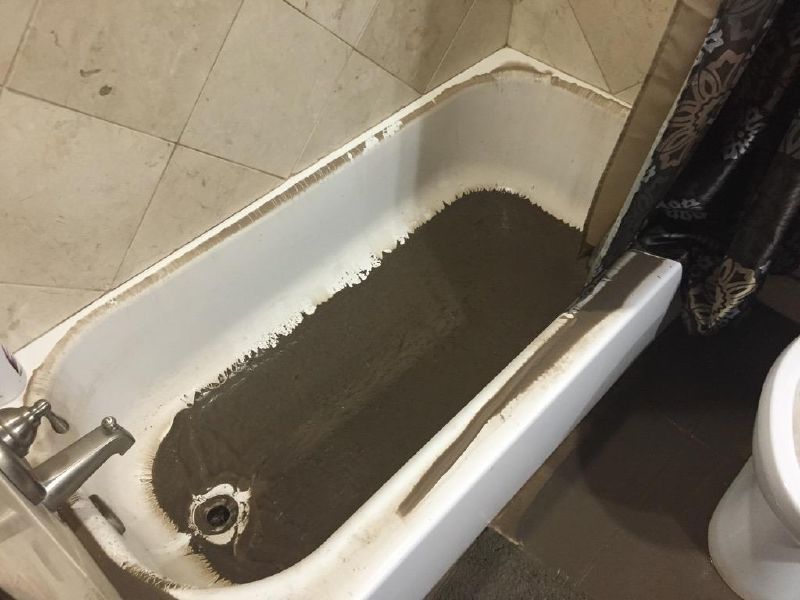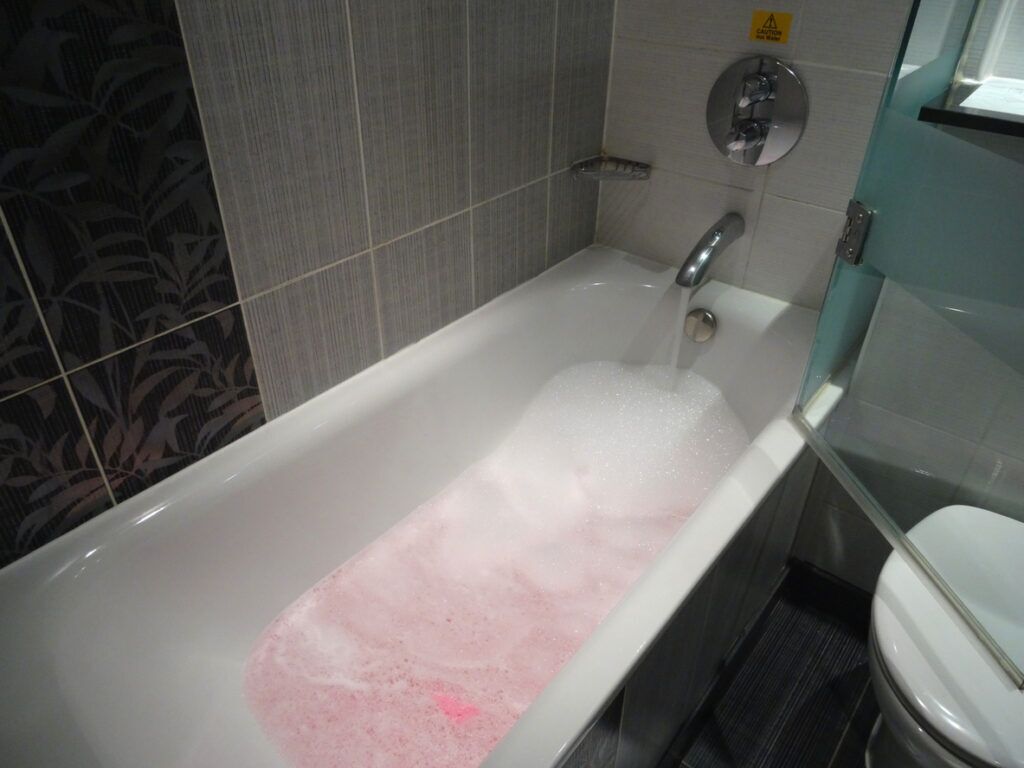Discovering the Causes of Drainage in the Bathtub
Discovering the Causes of Drainage in the Bathtub
Blog Article
Just about everyone has got their own opinion about Why sewage is coming up through your bathtub.

Sewage backup in the bath tub can be a stressful and unhygienic problem for any kind of house owner. Not just is it troublesome, however it also postures major wellness threats and indicates underlying issues with the plumbing system. Recognizing why sewage is showing up through the bath tub is crucial for taking appropriate action to deal with the issue efficiently.
Introduction to the Issue
Usual Factors for Sewage Back-up
Blockages in the Sewer Line
One of the most common causes of sewer backup is a clog in the drain line. This can take place due to the accumulation of debris, oil, or foreign items in the pipelines, avoiding appropriate flow and creating sewage to back up into your tub.
Tree Origin Breach
Tree origins looking for dampness and nutrients can infiltrate drain lines via tiny cracks or joints. In time, these origins can grow and increase, triggering significant damages to the pipes and causing sewage backup issues.
Understanding the Problem
When sewage draws back up into the bath tub, it's a clear indication of a trouble with the drain system. The wastewater that should be streaming away from your home is rather discovering its way back into your living space, which can cause considerable damage and carcinogen.
Potential Reasons
Several factors can add to sewer back-up in the tub. From clogs in the sewer line to problems with the plumbing facilities, identifying the root cause is essential for locating a remedy.
Aging Infrastructure
Older homes might have dated plumbing systems that are a lot more vulnerable to rust, cracks, and deterioration. As pipelines age, they come to be extra prone to leaks and clogs, raising the probability of sewer backup incidents.
Heavy Rainfall or Flooding
Throughout durations of heavy rainfall or flooding, the sewer system may become overwhelmed with excess water, causing back-ups and overflows. This can cause sewage supporting into bathtubs and other components inside the home.
Indicators of Sewer Back-up
Foul Odors
Undesirable smells rising from drains or components, especially in the washroom, might indicate sewage backup issues. These odors are often strong and persistent, indicating a problem that needs prompt interest.
Slow Draining Fixtures
Tubs, sinks, and toilets that drain gradually or not at all could be experiencing sewage back-up. If several fixtures are impacted at the same time, it's most likely that the concern stems from a typical point, such as the major sewage system line.
Gurgling Sounds
Weird gurgling or bubbling noises originating from drains pipes when water is running elsewhere in your house are indicative of air trapped in the plumbing system. This air buildup can result from sewer backup and must be examined promptly.
Health And Wellness Threats Connected With Sewer Backup
Contamination of Water Supply
Sewage backup can pollute the supply of water in your home, presenting a significant wellness threat to you and your family. Direct exposure to contaminated water can cause gastrointestinal issues, skin infections, and various other health problems.
Mold and mildew Growth
Dampness from sewer back-up can produce perfect conditions for mold and mildew growth in your home. Mold spores can intensify respiratory system issues and create allergies in delicate people, making prompt clean-up vital.
Spread of Illness
Sewage includes dangerous microorganisms, viruses, and bloodsuckers that can cause a series of illness, consisting of hepatitis, cholera, and gastroenteritis. Entering into contact with sewage or polluted surface areas puts you at risk of infection.
Tidying up After Sewer Back-up
Disinfection Procedures
Thoroughly decontaminate and disinfect influenced areas after sewage back-up to get rid of dangerous microorganisms and protect against mold and mildew growth. Usage appropriate cleansing products and safety equipment to make sure risk-free and effective clean-up.
Remediation of Impacted Areas
Fix any kind of damages to floor covering, walls, or components triggered by sewer backup. Relying on the level of the damage, you may need to change carpets, drywall, or other materials to recover your home to its pre-loss problem.
Immediate Actions to Take
Shutting Off Water System
In the event of sewer back-up, it's important to switch off the water system to avoid more contamination and damage. Locate the main water shutoff valve in your home and closed it off up until the issue can be dealt with.
Calling an Expert Plumber
Dealing with sewage back-up is not a do it yourself task. Contact an accredited plumber with experience in managing sewage-related concerns to evaluate the situation and carry out necessary repairs or cleanups.
Avoiding Contact with Infected Water
Up until the sewer backup is fixed, stay clear of contact with infected water to stop the spread of microorganisms and pathogens. Wear protective equipment if you need to be in the affected area and clean your hands thoroughly afterward.
Preventive Measures
Routine Upkeep of Drain Lines
Set up normal examinations and upkeep of your sewage system lines to recognize and attend to potential issues prior to they escalate into major troubles. This can consist of cleaning out particles, evaluating for tree root breach, and fixing any broken pipelines.
Mounting Bayou Shutoffs
Consider setting up bayou valves in your plumbing system to avoid sewer from receding right into your home throughout durations of heavy rainfall or flooding. These shutoffs immediately close when water starts backing up, safeguarding your residential or commercial property from contamination.
Proper Disposal of Household Waste
Avoid purging anything besides toilet tissue and human waste down the bathroom to avoid obstructions and obstructions in the drain line. Dispose of grease, oil, and various other home chemicals correctly to minimize the danger of plumbing problems.
Why is there sewage coming up from my bathtub?
These gas fumes, like hydrogen sulfide – the gas that leaves a rotten egg smell in its wake and is highly flammable and toxic – can be hazardous to your health. Sewage poses major health risks as it contains harmful bacteria and microorganisms that can be dangerous if exposed to them.
Sewage cleanup should be considered an emergency.
So, why is there sewage coming up from your bathroom? There are several common causes of a sewage backup.
The most common reason for sewage coming up through your bathroom is a clogged sewer line. All plumbing in your bathroom connects to a single drain pipe that leads to the sewer line under your house. This drain line carries all wastewater and sewage away from your home to the city’s sewer system.
When the sewer line becomes clogged or blocked, wastewater has nowhere to go but back toward your house. This results in sewage coming up through your drains, often starting with your tub or shower.
Another culprit may be the sewage ejector pump, which is used when a bathroom, laundry room or any other type of plumbing fixture is located below the level of the main sewer or septic line flowing from the house. Most commonly, ejector pumps are used in homes with basement bathrooms or laundry rooms.
When you experience sewage coming up through your bathtub, it’s always best to contact a professional. Attempts to fix a clogged sewer line without experience often lead to more plumbing damage.
Make sure that no one enters the affected area, and open as many windows as possible. Pre-treat the flooded area with small splashes of chlorine bleach. Wear protection gear like rubber gloves, a mask, and water-resistant coveralls.
https://www.shawlocal.com/the-herald-news/sponsored/2022/08/17/omega-plumbing-10199038/

I am just very involved in What to Do if Sewage Starts Coming Up Through Your Bathtub and I really hope you appreciated the article. So long as you enjoyed reading our article if you please do not forget to share it. Many thanks for going through it.
Request Service
Report this page